Culture and Heritage
Welcome to the Herzegovina Wine Route, where stunning landscapes, unique culture, and world-class wines combine to offer a memorable experience for wine and culture enthusiasts alike.
This picturesque region showcases the best of Bosnia and Herzegovina, from the breathtaking views in Mostar to the historic charm of Trebinje, Ljubuški with the oldest museum in Bosnia and Herzegovina, religious and pilgrimage sites, and UNESCO sites like the Old Bridge and Radimlja necropolis.
The Herzegovina Wine Route is home to a vibrant wine and religious heritage, with iconic places to explore such as the pilgrimage site in Medjugorje, the Tekke in Blagaj, and the monasteries around Trebinje. Other highlights include the Tvrdos Monastery, the Rabi Moša Danon site in Stolac, and the numerous vineyards that dot the landscape. Whether you’re looking to explore the region’s spiritual side or its winemaking traditions, the Herzegovina Wine Route offers a unique insight into the culture and history of the region.
HWR
Culture and Heritage
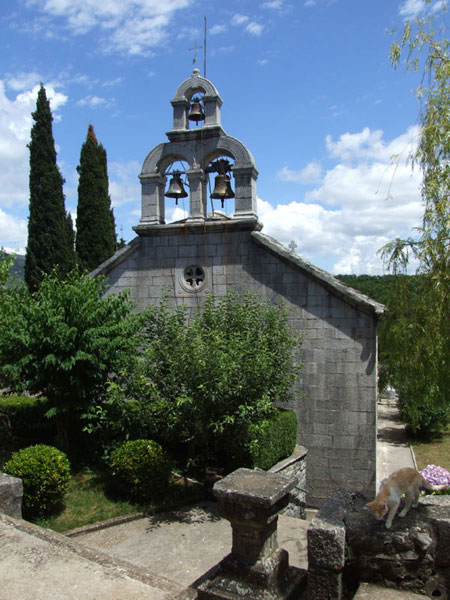
Duži Monastery
The Duži monastery is located 12 km south of Trebinje in the area of the Trebinje Forest. At the end of the 17th century, on the site of today’s monastery, there was a small church with auxiliary buildings that housed the monks who looked after the livestock of the Tvrdoš monastery. After the destruction of the Tvrdoš monastery by the Venetians in 1694, part of the brotherhood went to the Savina monastery (Herceg Novi) carrying with them some of the valuable monastery relics. The second part of the brotherhood goes to the Duži monastery, transferring the remaining part of the relics, but also the glory of the Tvrdoš monastery , the Assumption of the Blessed Virgin Mary. In the Turkish destruction, almost all the goods of the Tvrdoš monastery, transferred to Duža, perished. Until the abolition of the Patriarchate of Peć in 1776, the monastery was the center of the Metropolitanate of Herzegovina. After World War I, the monastery was home to Russian monks, exiled from Imperial Russia, who painted the monastery. With the renovation of the Tvrdoš monastery in 1992, its glory was restored, and the Duža monastery was restored to its original glory as the “Cover of the Blessed Virgin Mary”.
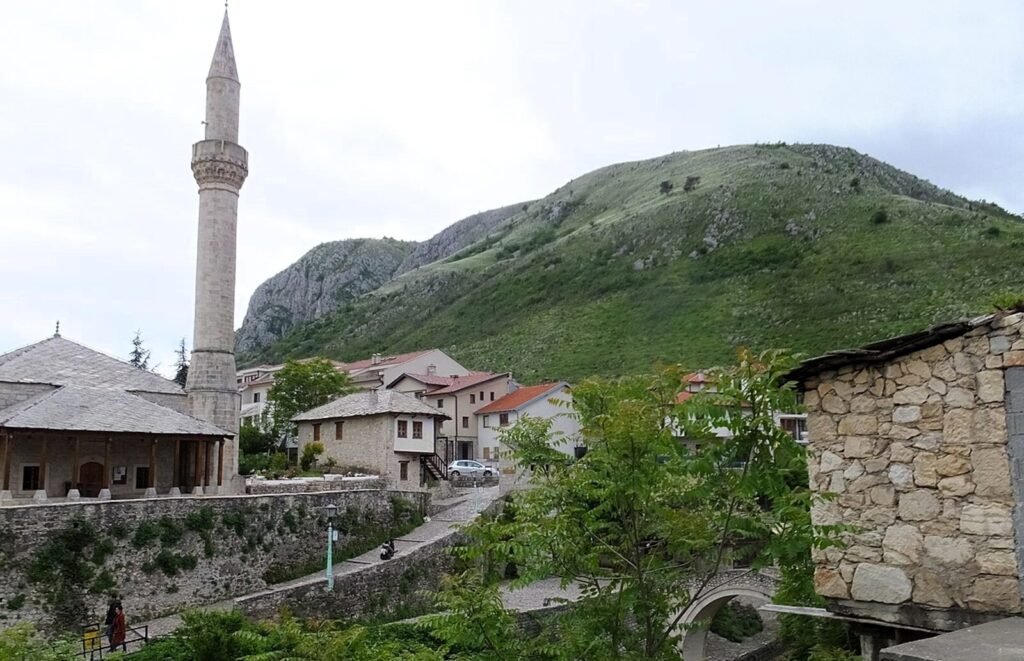
Hadzi-Kurt Mosque (Tabačica)
This mosque was built between the 16th and 17th centuries, as desired by Hajji Kurt, member of the ancient Mostar Kurt family. Standing on the right bank of the Neretva River, about 100 metres from the Old Bridge, this mosque was next to the antque Tabhana, the district where leather processing workshops were once found; and this fact reveals the mystery of its name, deriving actually from the term Tabaci (leather tanners). A row of small shops and its location make the Tabačica mosque one of the most frequently visited in Mostar.
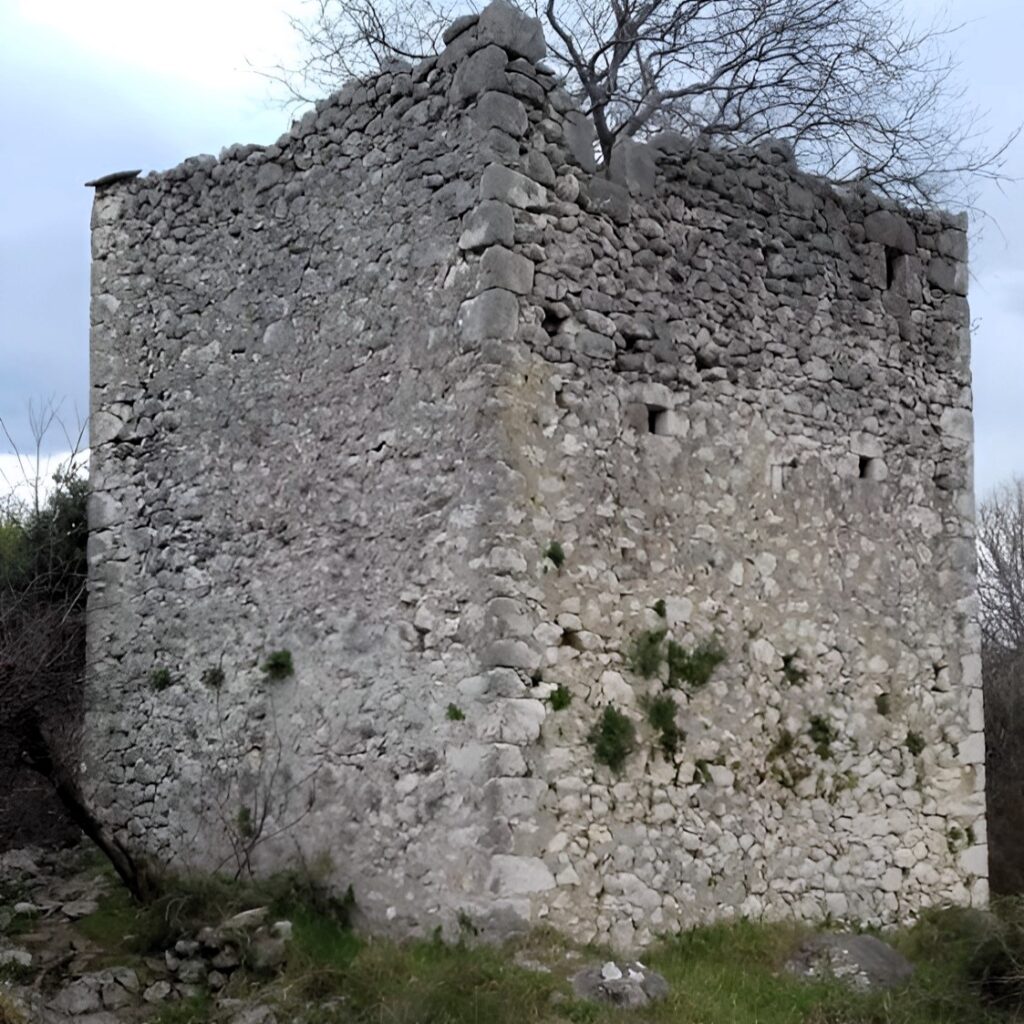
Hajduk Tower
There are two towers in the village – one is located in the flat area next to the Neretva (Ramić tower), while the other is located on a hilly area that was the property of the Hajduk family and that is why the local population calls it Hajduk tower. In later times, the tower became the property of the Duraković family. No information about the time of construction has been preserved. Based on the construction characteristics (thickness of the walls, rectangular shape and ground position of the entrance door, originally unplastered walls), it is possible to assume that it was built in the first period of tower construction in Bosnia and Herzegovina, i.e. at the end of the 16th or during the 17th century.
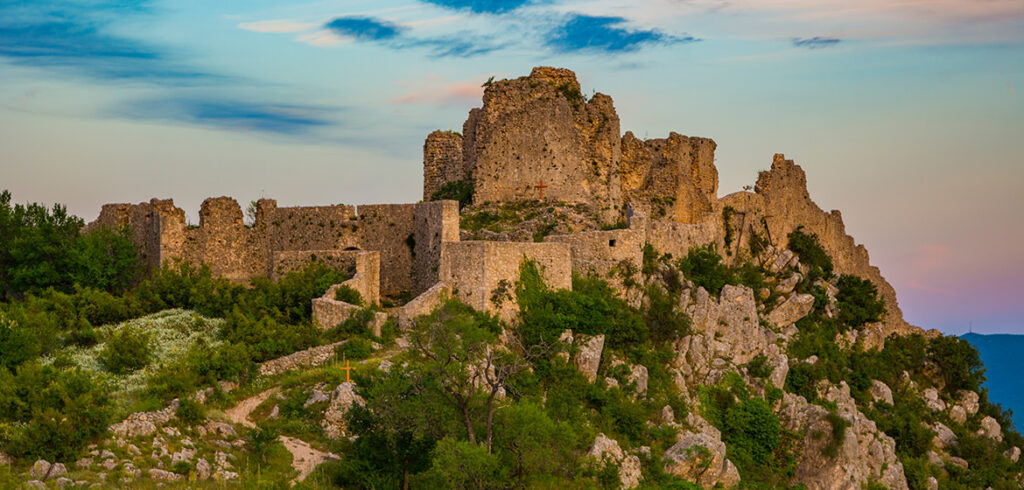
Herceg Stjepan fortress in Ljubuški
The fortress was built in the Middle Ages, above Ljubuški, at the very top of the Butorovica hill. According to folk tales, herceg (duke) Stjepan Vukčić Kosača is responsible for the construction of the fortress, although historically it is older than him. In written sources Ljubuški is first mentioned on February 21, 1444 under the name Lubussa. The fortress complex consists of two parts. The central tower “Herceguša” was built at the end of the 14th or beginning of the 15th century and the perimeter wall in the form of an irregular polygon with massive towers was built in the Ottoman period after 1472. Shortly before 1477, the city fell into Turkish hands and became a frontier fortress with a strong garrison. The Turks converted the fortress into a military residence, with all the accompanying facilities. After 1835 the Ljubuški fortress lost its defensive and strategic role. The Old Town of Ljubuški was declared a National Monument of Bosnia and Herzegovina in October 2003.

Hercegovina Gračanica
The tourist complex Hercegovačka Gračanica is the most visited location of sacred character in eastern Herzegovina. Herzegovinian Gračanica was built as a fulfillment of the wish of the famous Serbian poet Jovan Dučić expressed in his will. He wanted to be buried on one of the hills surrounding Trebinje in a church similar to “the one in Kosovo”, referring to Kosovo Gračanica, the most famous endowment of King Milutin from 1321. Jovan Dučić died in 1943, on April 7, the feast of the Annunciation. On that same day in 1999, the foundation stone for the construction of Herzegovinian Gračanica was laid on Crkvina Hill (at the location where, according to some reports, there was the Church of St. Michael the Archangel, an endowment of King Milutin). The entire Hercegovačka Gračanica complex was completed the following year, in 2000. On the feast of the Annunciation (47 years after the poet’s death), in 2000, Dučić’s mortal remains were transferred to Hercegovačka Gračanica. Herzegovinian Gracanica is not identical to the one in Kosovo. Namely, it is smaller by one level, and the interior has certain differences. The church was built in the Byzantine style and is vividly painted in the so-called. “secco” technique (dry painting technique) under the strong influence of the famous Greek icon painter Stamatis Skliris. Inside the church, there are 16 pillars, 15 of which are square, while one is rounded and has a special significance and symbolism. At its foot, there is a stone brought from Kosovska Gračanica, which has the symbolism of a “stone from the hearth” that conveys the spirit of the “old home” to the “new home”. On the floor of Herecgovačka Gračanica is a mosaic replica from the Prizren Monastery of the Holy Archangels (Metohija), an endowment of Emperor Dušan, and it also has strong symbolism. At the very entrance to the church, a “serpent” is presented, which personifies the devil, so that visitors entering the church step on the “unholy” and thus renounce him. The iconostasis is a faithful copy of the iconostasis from the Hilandar monastery on Mount Athos. It was made at the Tvrdoš monastery. On the right side of the church is the poet’s grave with a modest inscription “Jovan Dučić – poet”, written according to his wishes. As part of the complex, next to the church, there is also a bell tower, bishop’s palace, an amphitheater, a souvenir shop and the summer restaurant “Dučićev pogled”. Over time, Gračanica became a favorite place for couples to get married. In the church itself, one of the most impressive motifs is the “Wedding in Cana of Galilee”.
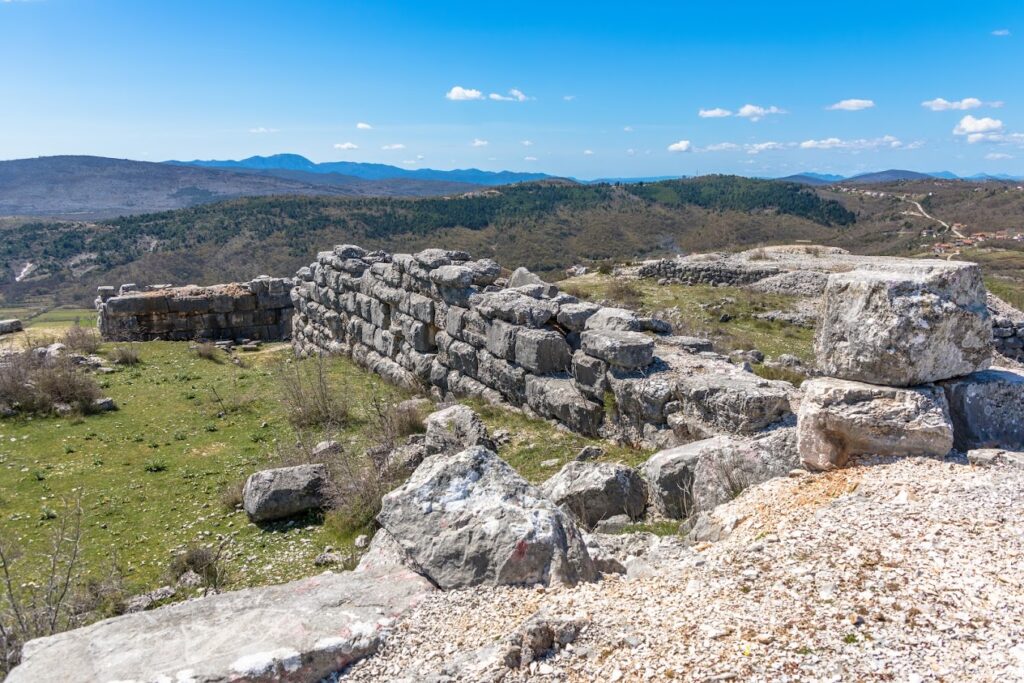
Illyrian city of Daorson
Daorson was the capital of the Hellenized Illyrian tribe of Daors who lived from 300 to 50 BC in the valley of the Neretva River. The remains of this once strongest city in the wider area are located in Ošanjići, near Stolac in Herzegovina. It consisted of three units, the central one of which was the fortress – the acropolis, which was surrounded by “cyclopean” walls made of huge stone blocks (similar to those in Mycenae in Greece). All important administrative, public and religious buildings were located in it. The defensive wall, which stretches from the southwest to the northeast, was 65 m long, 4.2 m wide, and between 4.5 and 7.5 m high, with gates and towers at both ends. The Daorsi adopted the Greek language and alphabet, and were in constant trade relations with the Greeks. Remains of numerous wine amphorae and pieces of fine ceramics were found, but the most valuable find is a bronze helmet decorated with a series of Greek characters: Aphrodite, Nike, Helios, Dionysus, Muses, Pegasus and others, and the inscription on it is similar to the inscription on the helmet found in Macedonia. Today, more than three and a half thousand years later, Daorson bears witness to the weight of the years with its megalithic walls. Centuries of powerful and glorious history have not been translated into a tourist attraction today.
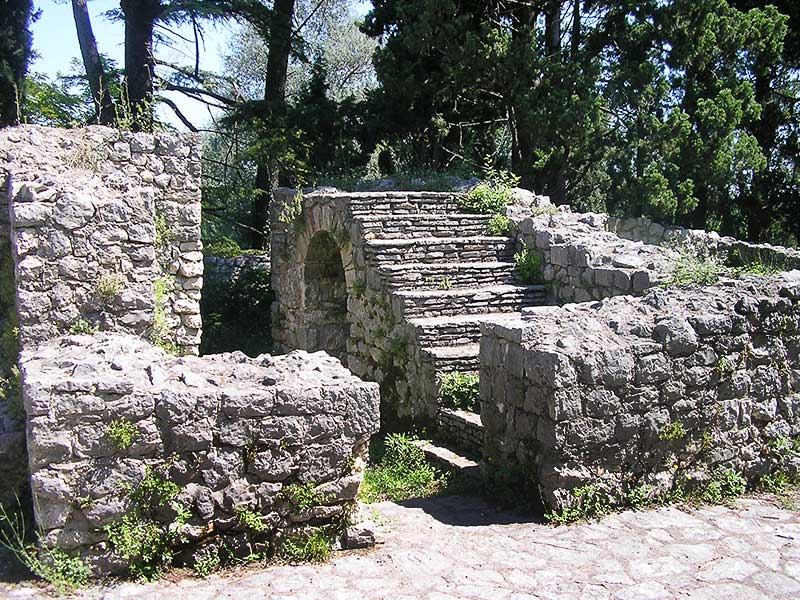
Antique Villa Mogorjelo
Mogorjelo is one of the most important monuments of the Roman era in Bosnia and Herzegovina and belongs to the most beautiful buildings of late antique architecture. Mogorjelo supplied the Roman city of Narona and probably served in the defense of the city and its surrounding, a dense grove of coastal trees (cypress) gives this monument a particularly beautiful frame. The building was excavated between 1889 and 1903, and in the following years it was conserved, being declared as a national monument in 2002.

Apparition Hill and the Blue Cross
Apparition Hill and the Blue Cross in Medjugorje hold profound spiritual significance for millions of pilgrims worldwide. Medjugorje is a renowned pilgrimage site where, since June 1981, six young visionaries have reported regular apparitions of the Virgin Mary. Apparition Hill, or Podbrdo, is the site where the first apparition allegedly occurred, drawing countless devotees seeking solace, healing, and spiritual renewal. On the other hand, the Blue Cross, situated at the base of Apparition Hill, has become a place of intense prayer and reflection, where visitors meditate on the sufferings of Christ and present their intentions to the Virgin Mary. Both sites have become symbols of hope and faith, attracting people from various backgrounds to seek divine encounters and experience the transformative power of Medjugorje’s spiritual atmosphere.

Antique Villa Mogorjelo
Mogorjelo is one of the most important monuments of the Roman era in Bosnia and Herzegovina and belongs to the most beautiful buildings of late antique architecture. Mogorjelo supplied the Roman city of Narona and probably served in the defense of the city and its surrounding, a dense grove of coastal trees (cypress) gives this monument a particularly beautiful frame. The building was excavated between 1889 and 1903, and in the following years it was conserved, being declared as a national monument in 2002.

Apparition Hill and the Blue Cross
Apparition Hill and the Blue Cross in Medjugorje hold profound spiritual significance for millions of pilgrims worldwide. Medjugorje is a renowned pilgrimage site where, since June 1981, six young visionaries have reported regular apparitions of the Virgin Mary. Apparition Hill, or Podbrdo, is the site where the first apparition allegedly occurred, drawing countless devotees seeking solace, healing, and spiritual renewal. On the other hand, the Blue Cross, situated at the base of Apparition Hill, has become a place of intense prayer and reflection, where visitors meditate on the sufferings of Christ and present their intentions to the Virgin Mary. Both sites have become symbols of hope and faith, attracting people from various backgrounds to seek divine encounters and experience the transformative power of Medjugorje’s spiritual atmosphere.

Archaeological site Gabela
Gabela is a national cultural monument of Bosnia and Herzegovina. Due to its strategic location, Gabela was also inhabited in Roman times, from which we have the remains of a brick factory and farm buildings on the outskirts of the town. Of the large number of medieval buildings, the remains of the old fort and a stone plaque with a large winged lion, the symbol of the Republic of Venice, are the most impressive to this day. Gabela was from the 15th to the 18th century a large trading center, but also an important strategic fortress on the Venetian-Turkish border. At one time it was known as the slave square. Various political and economic interests were competing for supremacy over Gabel. The Turks occupied it in 1477, and after several failed attempts in 1694, the Venetians occupied Gabela, then with the Peace of Požarevac in 1718, Gabela belonged to the Turks, and the Venetians demolished all the important buildings. Gabela is again under Turkish administration, but without its former power. During the Austro-Hungarian rule and the construction of the narrow-gauge railway, Gabela was a junction from Sarajevo to Dubrovnik and Metković. The Mexican scientist Roberto Salinas Price developed a hypothesis based on geographical information in the Iliad that the Trojan War was in the valley of the Neretva River, that is, that Gabela was Ilios, the capital of the state of Troy.